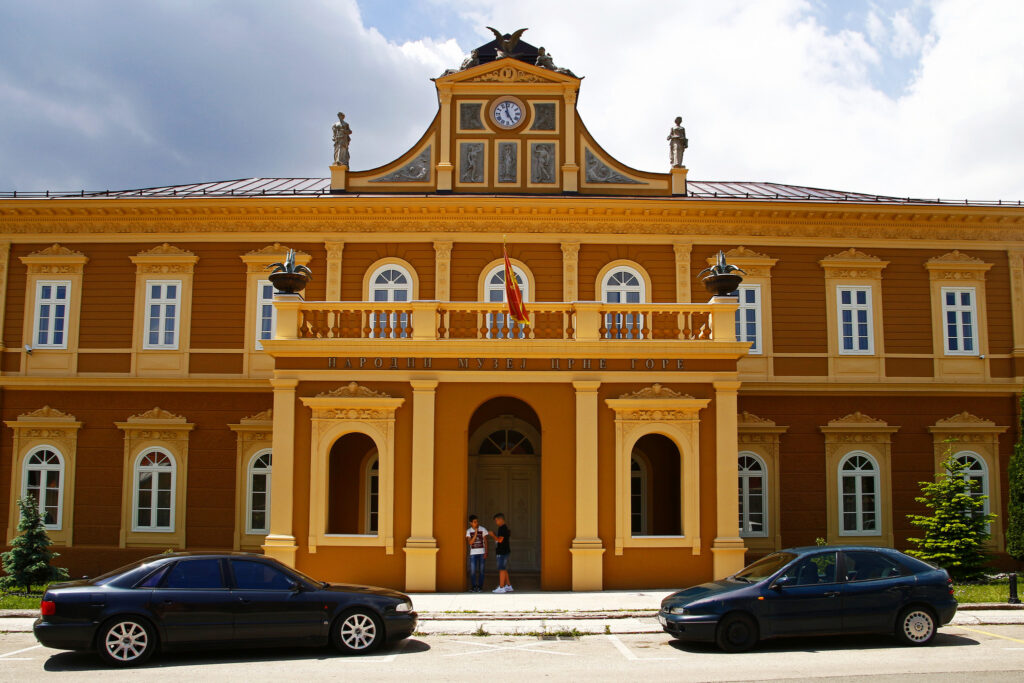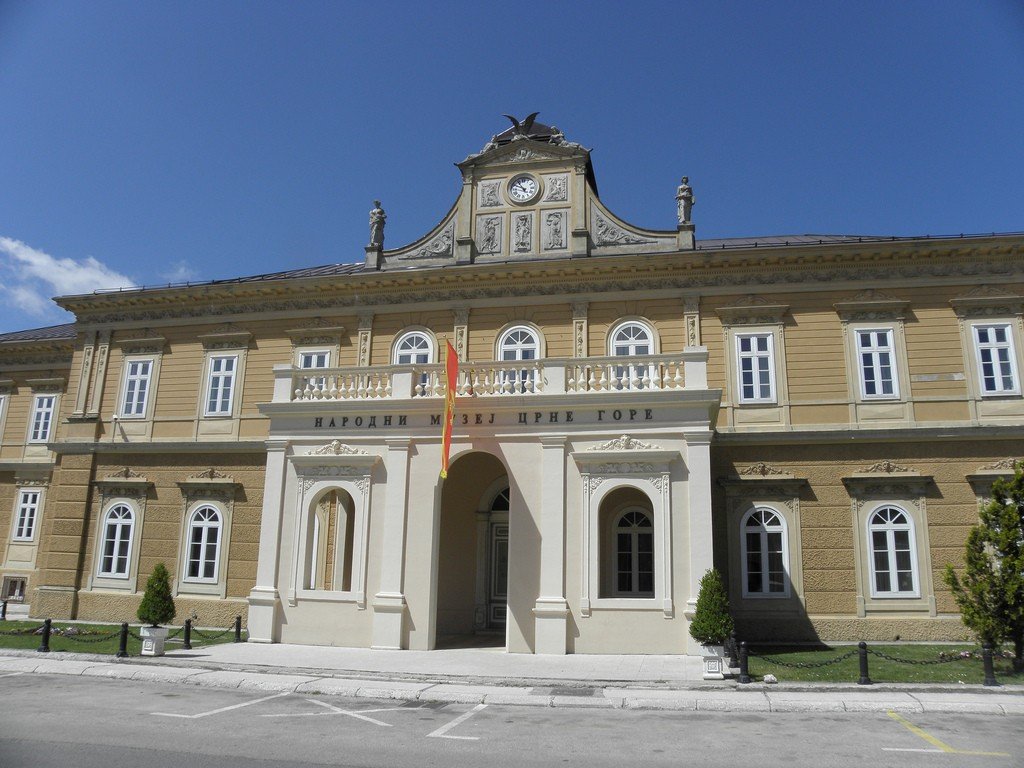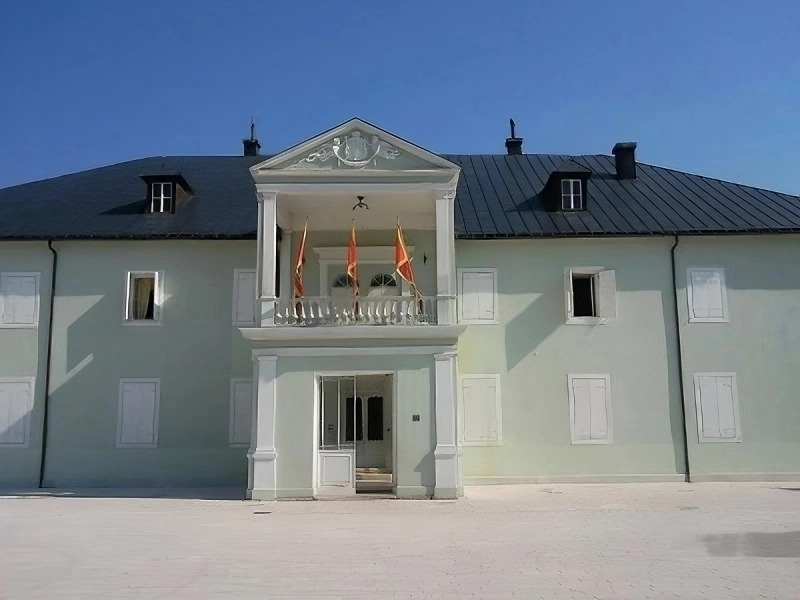Historical Significance of the Royal Palace of Cetinje
The Royal Palace of Cetinje has been a pivotal landmark throughout Montenegro’s history. Situated in the heart of Cetinje, the historical capital of Montenegro, this palace has witnessed the nation’s journey through various epochs, encapsulating moments of triumph, struggle, and transformation.
The palace, initially built in the 19th century, served as the residence of the Montenegrin royal family, the Petrović-Njegoš dynasty. It was not just a home but a symbol of Montenegrin sovereignty and resilience in the face of external pressures, particularly during the tumultuous years of Balkan politics and the Ottoman Empire’s influence.
Throughout its existence, the Royal Palace of Cetinje has seen many significant events. It hosted important political and diplomatic meetings, contributing to shaping the region’s history. The architecture of the palace, a blend of traditional Montenegrin and European styles, reflects the country’s cultural crossroads and its interactions with various European powers.
The Royal Palace also played a crucial role in the cultural and educational advancements of Montenegro. It housed the first public library, the national printing house, and was a center for fostering the arts and literature. These contributions were vital in nurturing a sense of national identity and cultural pride among Montenegrins.
As the 20th century brought changes to the political landscape of Europe, the palace’s role evolved, but its importance remained. Post World War I, as Montenegro became a part of the Kingdom of Serbs, Croats, and Slovenes, the palace continued to be a symbol of Montenegro’s historical sovereignty and cultural identity.Thus, the historical significance of this landmark remains undiminished, reflecting the nation’s enduring legacy. Today, as a beacon guiding Montenegro through its ongoing journey, the Royal Palace of Cetinje stands not just as a reminder of the past, but as a symbol of the corridors of time that continue to shape the country’s future.

The Royal Palace of Cetinje: Discovering its Architecture and Art
The Royal Palace of Cetinje opens a window into the unique architectural and artistic heritage of Montenegro. Originally constructed in the 19th century, the palace is an exemplary showcase of the fusion between traditional Montenegrin and European architectural styles, reflecting the country’s historical connections and cultural exchanges.
As visitors step inside, they are greeted by an array of artistic treasures. The interiors of the Royal Palace are adorned with a rich collection of artworks, including paintings, sculptures, and historical artifacts. These pieces not only embellish the palace but also tell the story of Montenegro’s artistic evolution and its ties with the broader European artistic movements.
Midway through the palace, the Royal Palace of Cetinje reveals its most impressive features. The grand halls and private chambers are a testament to the skilled craftsmanship and artistic vision of the era. The intricate designs and detailed decorations speak volumes about the cultural aspirations and aesthetic sensibilities of the Montenegrin royals.
The Royal Palace also holds a special place in the history of Montenegrin art. It has been a patron of local artists, fostering the growth of national art and contributing significantly to the cultural landscape of the country. The palace’s influence on Montenegrin art extends beyond its walls, impacting the country’s artistic development over the decades.
In conclusion, the Royal Palace of Cetinje stands as a remarkable embodiment of Montenegro’s architectural and artistic legacy. Its walls not only hold the history of a nation but continue to inspire and influence the artistic endeavors in Montenegro, making it a timeless symbol of the country’s rich cultural heritage.

Royal Legacy and Court Life at the Royal Palace of Cetinje
Exploring the royal legacy and court life at the Royal Palace of Cetinje reveals a fascinating glimpse into Montenegro’s history. The palace, during its heyday, was the epicenter of Montenegrin royal affairs, serving as a stage for grand events, diplomatic receptions, and the everyday life of the royal family.
Within these walls, the customs and traditions of the Montenegrin court were meticulously observed. From lavish banquets to solemn ceremonies, the palace bore witness to the unique blend of Montenegrin culture and European courtly etiquette. The lifestyle and activities at the palace were reflective of the era’s social norms and political dynamics, offering a rich tapestry of historical insights.
The personal lives of the monarchs and their families who resided in the palace also add to the allure of this historic site. Their stories, ranging from political intrigue to personal triumphs and tragedies, are integral to understanding the history and cultural fabric of Montenegro. These narratives, preserved through letters, diaries, and official documents, provide a deeply human aspect to the grandeur of the royal palace.
The influence of the royal family extended beyond the palace walls, shaping national policies and cultural trends. The palace was not just a residence; it was a symbol of national pride and a beacon of Montenegrin sovereignty. Its significance in shaping the national identity of Montenegro cannot be overstated.
In summary, the exploration of royal legacy and court life at the Royal Palace of Cetinje offers a rich and nuanced understanding of Montenegro’s past. The palace stands today as a testament to the country’s royal history and continues to echo the grandeur and complexities of the court life that once thrived within its walls, forever a cornerstone in the story of the Royal Palace of Cetinje.

The Royal Palace of Cetinje in Modern Times
In modern times, the Royal Palace of Cetinje has transitioned from a symbol of royal power and prestige to a cherished cultural and historical monument. No longer the residence of royalty, the palace now opens its doors to the public, offering a unique glimpse into Montenegro’s rich past and its evolving identity.
Today, the palace serves as a museum, showcasing a vast array of historical artifacts, royal regalia, and art pieces that narrate the story of Montenegro’s journey through time. Each room and corridor is a chapter in itself, revealing aspects of the nation’s culture, politics, and social life. The preservation and display of these items are not just about celebrating the past; they are about educating and inspiring future generations.
One of the most significant roles of the Royal Palace of Cetinje in contemporary times is its contribution to tourism in Montenegro. As a major historical attraction, it draws visitors from around the world, eager to explore its grand halls and learn about the country’s heritage. The palace not only enriches the visitor experience but also plays a vital part in the local economy, showcasing the potential of cultural tourism.
As we look at the current role of this historical monument, it’s clear that the Royal Palace of Cetinje continues to enrich Montenegro’s cultural and historical landscape, serving as a vital link between its regal past and dynamic future.

